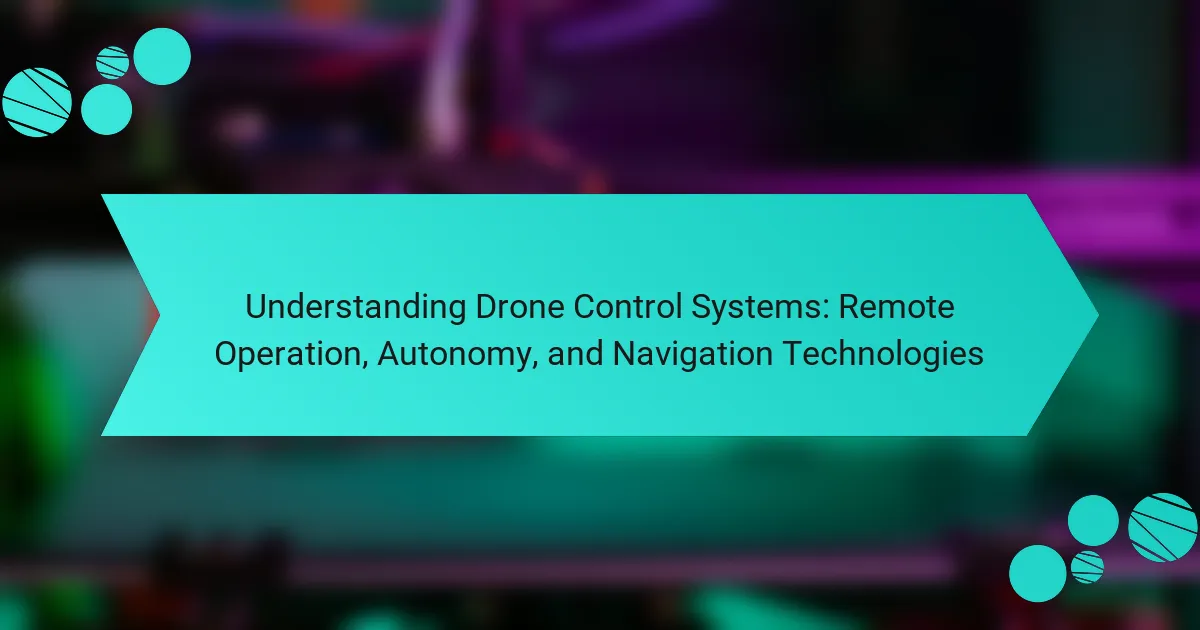
What is the impact of weight on drone maneuverability?
Weight directly impacts drone maneuverability by affecting its agility and responsiveness. Heavier drones experience reduced acceleration and slower turn rates. This is due to the increased inertia that heavier payloads create. Consequently, they require more power to achieve the same performance as lighter drones. Studies show that a drone’s maximum payload capacity can limit its flight dynamics. For instance, a drone carrying a payload near its maximum capacity may struggle with quick maneuvers. Additionally, weight influences battery life and flight time, further affecting maneuverability. Overall, increased weight leads to diminished maneuverability in drones, making them less agile in flight.
How does payload affect drone flight dynamics?
Payload directly affects drone flight dynamics by altering its weight and center of gravity. Increased payload leads to a higher overall mass, which requires more lift for the drone to maintain altitude. This can reduce the drone’s climb rate and maneuverability. Additionally, a shifted center of gravity can affect stability and control during flight.
For example, a drone carrying a heavy payload may experience slower response times to pilot commands. Research indicates that optimal payload capacity is essential for maintaining performance. Exceeding this capacity can lead to decreased battery efficiency and shorter flight times. Therefore, managing payload is crucial for effective drone operation.
What are the key factors influencing drone maneuverability?
Drone maneuverability is influenced by several key factors. These include weight, thrust-to-weight ratio, control surface design, and flight speed. Weight directly affects how quickly a drone can change direction. A higher payload increases inertia, making maneuverability more challenging. The thrust-to-weight ratio determines how much lift a drone can generate. A higher ratio allows for quicker ascents and turns. Control surface design, such as ailerons and rudders, impacts responsiveness. Well-designed surfaces enhance agility and precision in maneuvers. Flight speed also plays a role; faster speeds can lead to reduced control effectiveness. Each of these factors interacts to define overall drone agility in various flight conditions.
How does weight distribution impact drone stability?
Weight distribution significantly impacts drone stability. Proper weight distribution ensures balanced flight and control. An uneven weight distribution can lead to instability during flight. Drones with a forward or backward center of gravity may pitch uncontrollably. Lateral weight distribution affects roll stability. If one side is heavier, the drone may tilt in that direction. This can complicate maneuvering and increase the risk of crashes. Studies show that optimal weight distribution enhances responsiveness to pilot inputs. Thus, maintaining balanced weight is crucial for stable drone operation.
Why is understanding payload important for drone operators?
Understanding payload is crucial for drone operators because it directly affects flight performance. The payload determines the maximum weight a drone can carry, influencing its lift capacity and stability. If a drone exceeds its payload limit, it may struggle to ascend or maintain altitude. This can lead to decreased maneuverability and increased risk of crashes. Additionally, understanding payload helps operators optimize battery life and flight duration. For instance, a drone carrying excessive weight will consume more power and reduce its operational range. Thus, accurate payload management ensures safe and efficient drone operations.
What are the consequences of exceeding payload limits?
Exceeding payload limits can lead to significant operational issues for drones. It can result in reduced flight stability and control. Drones may experience difficulty in maneuvering, increasing the risk of crashes. Additionally, exceeding limits can cause excessive wear on motors and batteries. This may lead to decreased flight time and potential motor failure. Overloading can also affect the drone’s ability to ascend or maintain altitude. In some cases, it may violate aviation regulations, resulting in legal repercussions. Thus, adhering to payload limits is critical for safe and efficient drone operation.
How can payload optimization improve flight performance?
Payload optimization can significantly enhance flight performance by reducing unnecessary weight. Lighter payloads lead to improved lift-to-drag ratios. This directly translates to greater efficiency in fuel or battery consumption. Enhanced efficiency allows for longer flight durations and increased range. Additionally, optimal payload distribution improves stability and maneuverability during flight. Research indicates that drones with optimized payloads can achieve up to 30% better energy efficiency. This optimization also allows for quicker ascents and descents, enhancing overall operational effectiveness.

What are the different types of drones and their payload capacities?
There are several types of drones, each with varying payload capacities. Multirotor drones typically have a payload capacity ranging from 0.5 to 10 kilograms. Fixed-wing drones can carry heavier payloads, often between 5 to 50 kilograms. Hybrid drones, which combine features of multirotor and fixed-wing designs, can usually handle payloads of 10 to 25 kilograms. Racing drones generally have lower payload capacities, around 0.2 to 1 kilogram, due to their focus on speed and agility. Payload capacity varies based on design and intended use, impacting flight dynamics and maneuverability.
How do various drone designs accommodate weight variations?
Various drone designs accommodate weight variations through structural adaptations and propulsion systems. Lightweight materials like carbon fiber reduce overall weight, enhancing flight efficiency. Some drones feature adjustable payload systems to distribute weight evenly. Others employ advanced flight control algorithms to maintain stability despite weight changes. For example, quadcopters can adjust motor speeds to compensate for added weight. This adaptability allows drones to perform optimally under varying payload conditions. Additionally, some designs integrate modular components for easy weight adjustments. These strategies ensure that drones can handle different payloads while maintaining maneuverability and performance.
What are the payload capacities of common drone models?
Common drone models have varying payload capacities. The DJI Phantom 4 has a payload capacity of 1,000 grams. The DJI Matrice 600 can carry up to 6,000 grams. The Parrot Anafi has a lower capacity of 240 grams. The Yuneec Typhoon H can handle 1,200 grams. The Freefly Alta 8 supports a maximum payload of 9,000 grams. These capacities are crucial for applications like aerial photography and surveying.
How does the intended use of a drone influence its payload design?
The intended use of a drone significantly influences its payload design. Different applications require specific payload capabilities. For instance, drones used for aerial photography need lightweight cameras. Conversely, drones for agricultural purposes may carry heavier sensors for crop monitoring. The weight of the payload directly affects flight dynamics and maneuverability. Heavier payloads can reduce flight time and stability. Thus, engineers design payload systems based on the drone’s mission profile. This ensures optimal performance and efficiency during operation.
What are the regulations regarding drone payloads?
Regulations regarding drone payloads vary by country and jurisdiction. In the United States, the Federal Aviation Administration (FAA) regulates drone operations under Part 107. This regulation limits the maximum weight of the drone and its payload to 55 pounds. Pilots must ensure that their drone remains within this weight limit for safe operations. Additionally, payloads must not obstruct the drone’s sensors or impede its flight control. In some regions, special permissions may be required for carrying hazardous materials. Compliance with local laws is essential for legal drone operations.
How do weight restrictions vary by region or country?
Weight restrictions for drones vary significantly by region and country. In the United States, the Federal Aviation Administration (FAA) limits drones to a maximum weight of 55 pounds for commercial use. In contrast, the European Union’s European Union Aviation Safety Agency (EASA) has established a tiered system where drones under 250 grams are exempt from regulation. Countries like Canada have a similar framework, allowing drones under 250 grams to operate without a license. Australia enforces a maximum weight of 2 kilograms for recreational drones. These variations are influenced by local regulations, safety concerns, and environmental factors.
What are the safety implications of payload regulations?
Payload regulations ensure that drones operate within safe weight limits. Exceeding these limits can lead to loss of control during flight. Uncontrolled drones pose risks to people and property on the ground. Regulations also help maintain optimal flight performance and stability. For instance, a study by the Federal Aviation Administration (FAA) indicates that drones with excessive payloads experience increased difficulty in maneuverability. This can result in accidents or crashes. Compliance with payload regulations is crucial for ensuring safe drone operations.

How can drone operators manage payload effectively?
Drone operators can manage payload effectively by calculating optimal weight limits. Each drone has a maximum payload capacity defined by its specifications. Operators should balance the weight of the payload with the drone’s lift capability. This balance ensures stable flight and maneuverability. Operators must also consider the center of gravity when loading the drone. An improperly loaded drone can lead to unstable flight dynamics. Regularly checking the payload distribution helps maintain balance during flight. Using lightweight materials for payloads can enhance efficiency and performance.
What best practices should be followed for payload management?
Best practices for payload management include accurately calculating the total weight before flight. This ensures that the drone operates within its designed weight limits. Additionally, distributing the payload evenly helps maintain balance during flight. Regularly checking the payload for secure attachment prevents accidents. Using lightweight materials for payloads can enhance maneuverability. Following manufacturer guidelines for maximum payload capacity is crucial for safety. Lastly, conducting pre-flight checks for weight and balance ensures optimal performance. These practices help maximize flight efficiency and safety.
How can operators calculate optimal payload for their missions?
Operators can calculate optimal payload for their missions by analyzing several key factors. First, they must consider the drone’s maximum takeoff weight. This weight includes the drone itself, fuel, and payload. Next, operators should evaluate the mission requirements, including distance, duration, and environmental conditions.
Then, they can use performance charts provided by the drone manufacturer. These charts show how payload affects flight dynamics, including speed and battery life. Operators should also conduct test flights with varying payloads. This helps identify the maximum effective payload without compromising maneuverability or safety.
Additionally, they should monitor real-time data during flights. This data includes battery consumption and flight stability. By combining these methods, operators can determine the optimal payload for specific missions.
What tools and technologies assist in payload management?
Payload management tools and technologies include weight measurement systems, load cells, and software solutions. Weight measurement systems provide real-time data on payload weight. Load cells are used to measure the force exerted by the payload. Software solutions assist in planning and optimizing payload distribution. These technologies enhance the efficiency and safety of drone operations. They ensure that drones operate within their weight limits. This prevents potential flight issues caused by excessive payload. Accurate payload management is crucial for maintaining drone maneuverability and stability.
What common challenges do operators face with drone payloads?
Operators commonly face challenges such as weight limitations, stability issues, and power consumption with drone payloads. Excessive weight can reduce flight time and maneuverability. Stability issues arise when payloads are unevenly distributed, affecting flight control. High power consumption from heavier payloads can lead to shorter operational ranges. Additionally, regulatory compliance regarding payload types can complicate missions. Operators must also consider the payload’s impact on the drone’s overall performance and efficiency. These challenges can hinder operational effectiveness and require careful planning.
How can operators troubleshoot payload-related issues during flight?
Operators can troubleshoot payload-related issues during flight by monitoring performance metrics in real-time. They should check the drone’s altitude, speed, and battery consumption. If the drone struggles with maneuverability, operators should assess the weight distribution of the payload. Uneven weight can affect stability and control. Operators can also recalibrate the drone’s sensors to ensure accurate readings. Regularly reviewing the flight data logs can help identify patterns or anomalies. Additionally, operators should ensure that the payload does not exceed the manufacturer’s weight limits. This practice ensures safe and efficient flight operations.
What strategies can mitigate the impact of excessive weight on maneuverability?
Reducing excessive weight on drones can enhance maneuverability. Strategies include optimizing payload distribution to maintain balance. Using lightweight materials for drone construction can significantly decrease overall weight. Implementing advanced battery technologies can provide sufficient power without adding bulk. Regular maintenance ensures that all components function efficiently, reducing unnecessary weight from wear. Streamlining the design minimizes air resistance, improving agility. Lastly, adjusting flight software for optimal performance under varying payload conditions can enhance maneuverability. These strategies collectively contribute to better flight dynamics and control.
The primary entity of this article is drone maneuverability, specifically how weight and payload affect flight dynamics. The article examines the direct impact of weight on a drone’s agility, responsiveness, and stability, highlighting key factors such as thrust-to-weight ratio and weight distribution. It discusses the consequences of exceeding payload limits, the importance of payload optimization for enhanced performance, and the variations in payload capacities across different drone types. Additionally, it addresses best practices for effective payload management and the challenges operators face, providing insights into strategies for maintaining optimal maneuverability during flight.



